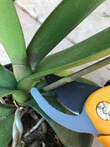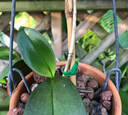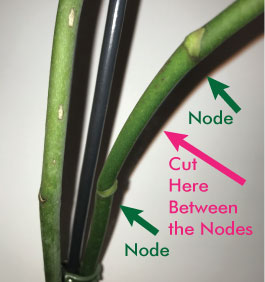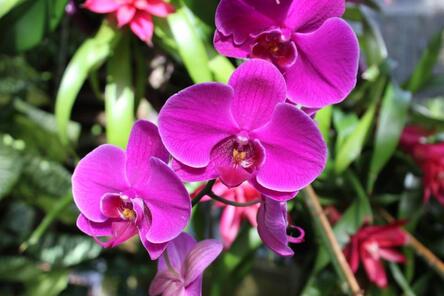|
Better-GroOrchidBlog
One of the most common questions we receive is, “What do I do with my Phalaenopsis once it has stopped blooming?” And our answer is… well, it depends.  Age Before Beauty If your Phalaenopsis is a younger plant, meaning its leaves and root mass are relatively smaller than a mature plant, we recommend cutting the spike once the blooms have dropped. Use sterile clippers and cut the flower stalk near the base of the plant as shown in the photo. Doing so will allow the plant to focus on developing into a larger, healthier plant so that you can enjoy more blooms the following year.  Brown or Green? Sometimes, your orchid will make the cutting decision for you. If your Phalaenopsis spike turns from a dark, healthy green to brown and perhaps even hollow, it’s time to cut. Once a spike has browned, it will never produce more flowers from the same stalk.  Follow Your Nodes A mature Phalaenopsis can rebloom from the same spike. Assuming your spike is green and healthy, find the node below the lowest initial blossom. (Nodes are the small, brown or green, ring-like markings on the Phalaenopsis flower stalk.) Use a sterile blade or shears to cut half-way between that node and the one below it. To prevent potential infection, you may want to dust the cut with ground cinnamon which acts at a natural anti-fungal treatment. This cutting method is effective about 50% of the time. Some plants are genetically pre-dispositioned for this approach not to work, in particular, Phalaenopsis plants with “sprays” of flowers.  Start Fresh Lastly, you can always guarantee a fresh start for next year by cutting your green Phalaenopsis stems at the base of the plant. Like with younger plants mentioned above, this cutting method will allow your Phalaenopsis to focus it's energy on growing healthier roots and leaves to prepare for the next flowering season. We hope these suggestions answer your question of “To Cut or Not to Cut.” Happy Blooming from Better-Gro! Comments are closed.
|
Resources
|
Company |
|
